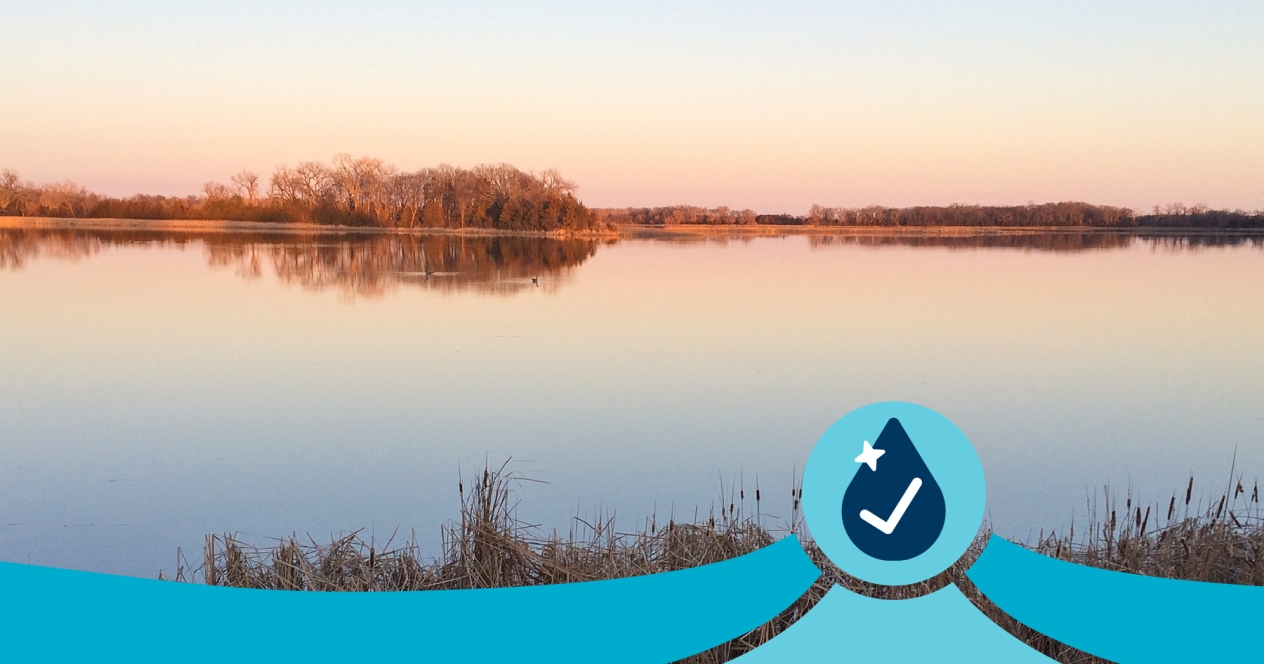
MPCA partners with DNR to reduce carp problems and get Middle Lake off the impaired waters list
For some of the 27 lakes, rivers, and streams that the MPCA removed from the impaired waters list this year, the causes are well-known. Sometimes, though, the road to delisting isn’t so straightforward. That was the case with Middle Lake, which the MPCA recently declared healthy enough to remove from the list after 12 years.
Understanding what it takes to remove a body of water from the list requires understanding what caused the listing in the first place. Identifying the cause of the impairment at Middle Lake in Kandiyohi County required help from the Department of Natural Resources (DNR) and its lake surveys to get to the bottom of the issue.
And it turned out “getting to the bottom of it” required dealing with some bottom feeders.
The problem with carp
“I was surprised when I first received the data saying Middle Lake was impaired for excess phosphorus,” says Paul Wymar, the southwest watershed manager for the MPCA. “Middle Lake doesn’t have a lot of lake shore development.”
Middle Lake, as surmised by its name, is located between Norway Lake and Lake Andrew with parts of the lake shore stretching into Sibley State Park. Kayakers and canoers enjoy the calm lake during summer months while ice fisherman visit infrequently during the winter. The shallow lake is a suitable environment for a variety of waterfowl, other wetland wildlife, and fish.
However, Middle Lake is also no stranger to a common nuisance found in many midwestern lakes.
“Carp are what some refer to as ecosystem engineers,” says Josh Kavenagh, a senior wildlife specialist at the DNR.
These particular ecosystem engineers do not change the environment for the better. Instead, these fish alter the environment to suit their needs primarily through their feeding habits.
“They actually stick their nose into the mud and swim like a pig rooting through the mud,” says Dave Coahran, an area fisheries supervisor at the DNR. “They really are like aquatic pigs the way they stir up sediment.”
When carp stir up this nutrient-rich sediment at the bottom of the lake, they release the phosphorus buried within those sediments. This stirred-up phosphorus is then available for algae growth, causing other aquatic plants and animals to compete with algae for oxygen. Too much algae degrades habitat conditions for fish, aquatic insects, and other wetland wildlife. Increased water turbidity from the carp’s feeding habits also leads to decreased water clarity, preventing rooted aquatic plants from growing. It becomes a vicious cycle of poor water quality and habitat conditions.
“Middle Lake is only about 11 feet deep, so when the carp stir up the lake and release these nutrients, it’s almost as if fertilizers have run off into the lake,” explains Jesse Anderson, a water quality monitor for the MPCA.
Carp aren’t going away and they can coexist with healthy lakes and fisheries, but they have a pronounced impact on clear, shallow lakes like Middle Lake.
“We have a lot of systems where we have hundreds of pounds of carp per acre, but these are the waterbodies that don’t have much vegetation in them,” Coahran says. “But if it’s a system that supports waterfowl habitat, that’s when you want clear water with lots of vegetation like Middle Lake.”
Like much of nature, it’s all about finding the right balance.
Managing carp
Carp likely found their way into Middle Lake through Lake Andrew, a recreational fishing lake with a large variety of fish. Middle Lake flows into Lake Andrew, but their connection can be intermittent depending on rainfall.
To limit the number of large fish migrating into Middle Lake from Lake Andrew, the DNR installed a fish barrier in the form of a stainless steel screen fixed to a culvert that connects the two lakes.
“The screen is designed to stop large-bodied fish such as adult carp, but smaller fish, including northern pike, have the ability to pass and spawn in Middle Lake,” Kavanagh says.
Simply limiting the number of carp in Middle Lake has been a significant win.
“In my opinion, the main reason why Middle Lake got delisted was because the carp population is much lower now,” Kavanagh says. “The lake is much more pristine.”
The DNR is scheduled to survey the lake’s fish population again this next summer to confirm the drop in the carp population. Both Kavanagh and Cohran say they believe that the water clarity improvements coincide with the decreased numbers of carp in the lake.
In addition to efforts from the DNR, Kandiyohi County has worked to improve stormwater drainage by building stormwater control systems. Installments near Norway Lake aim to capture stormwater and keep it from flowing into the three lakes.
“It’s always good to hear when a lake is delisted,” Wyman says. “It just takes work.”
